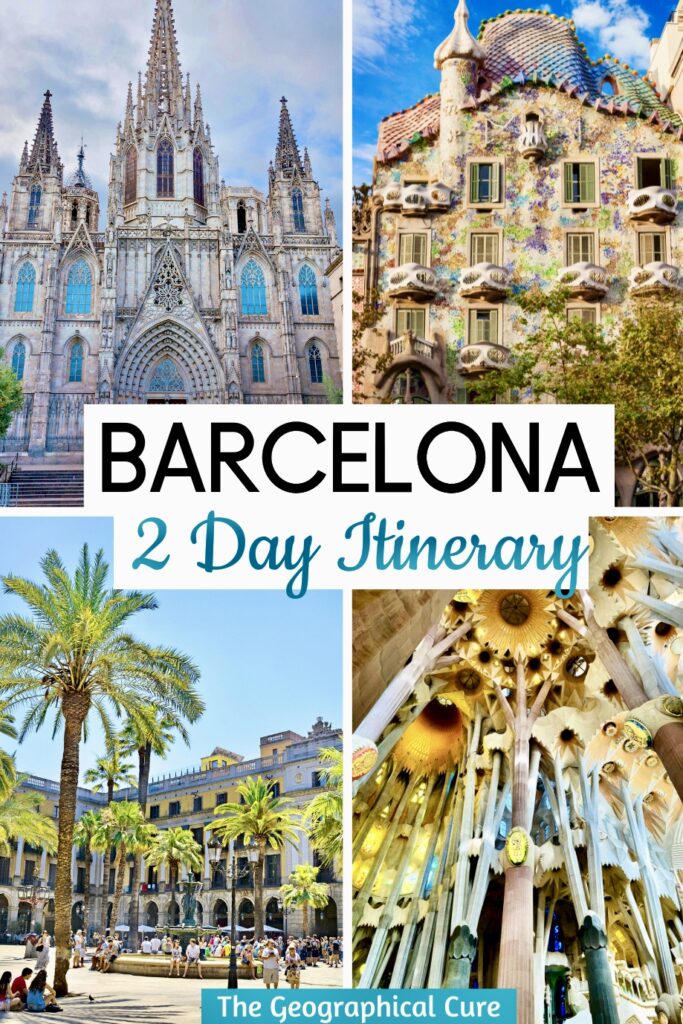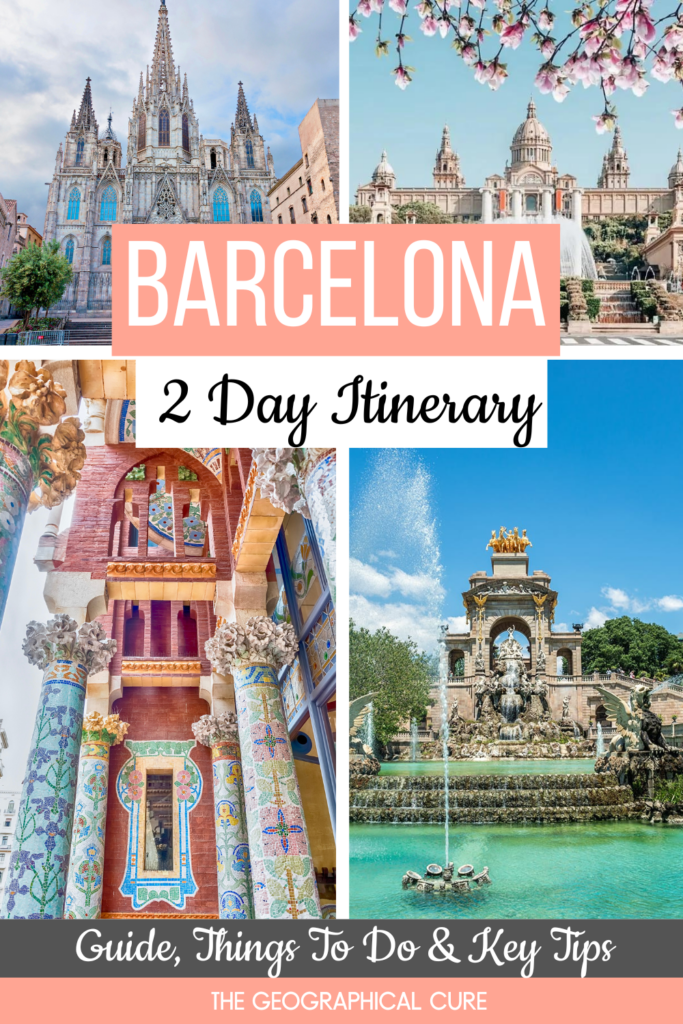Barcelona has long been a rebel. Artists still break new ground. And the city is a bastion in the fight for Catalan independence.
Barcelona is a delightful kaleidoscope of modernity and history. You can visit spectacular Modernista mansions, walk down winding cobbled lanes, and go to ultra modern art galleries.
Each and every barrie (neighborhood) has its own distinctive history and culture. And they are all home to fabulous eats.
In this 2 days in Barcelona itinerary, I cover all the top sites and gives you tips on where to eat, stay, and play.
Overview Of 2 Days In Barcelona
- Gothic Quarter
- Barcelona Cathedral
- La Rambla Boqueria Market
- Palau de la Musica Catalana
- Picasso Museum
- El Born
- Sagrada Familia
- Casa Batllo
- La Pedrera
- Montjuic
- Miro Foundation or MNAC
- Magic Fountain
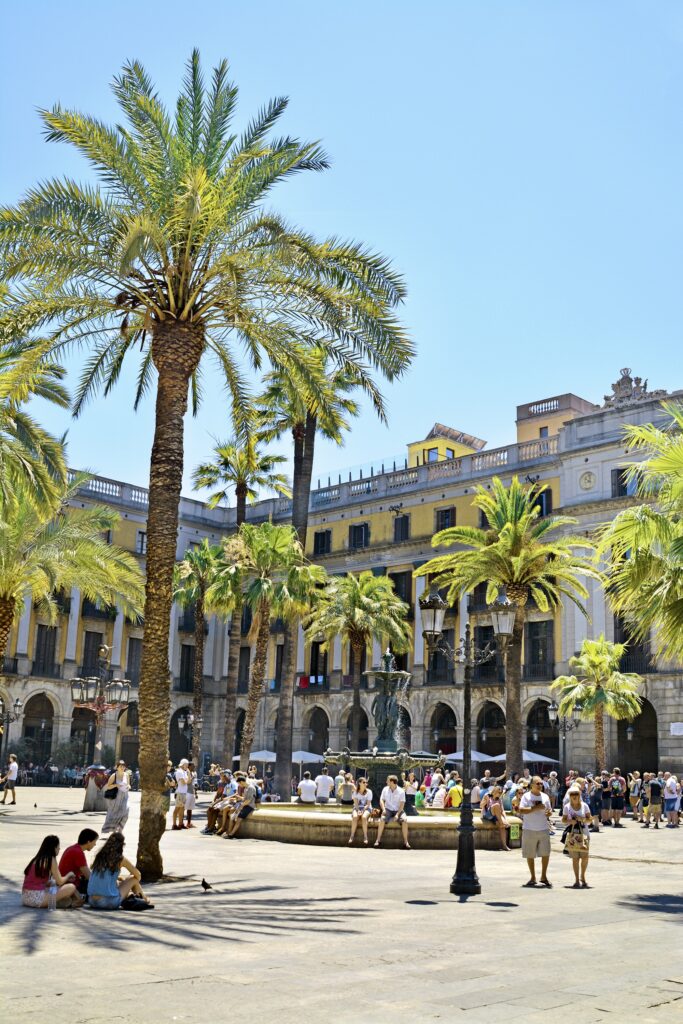
Day 1: Gothic Quarter
Enjoy breakfast at a local cafe or wherever you’re staying. Or simply grab a pastry and coffee and get start hoofing it, which is what the Spanish typically do.
Kick off your exploration in the atmospheric Gothic Quarter, visiting landmarks like the Barcelona Cathedral and wandering the atmospheric medieval alleys.
The massive Neo-Gothic cathedral has an ornate facade like French cathedrals you may have seen.
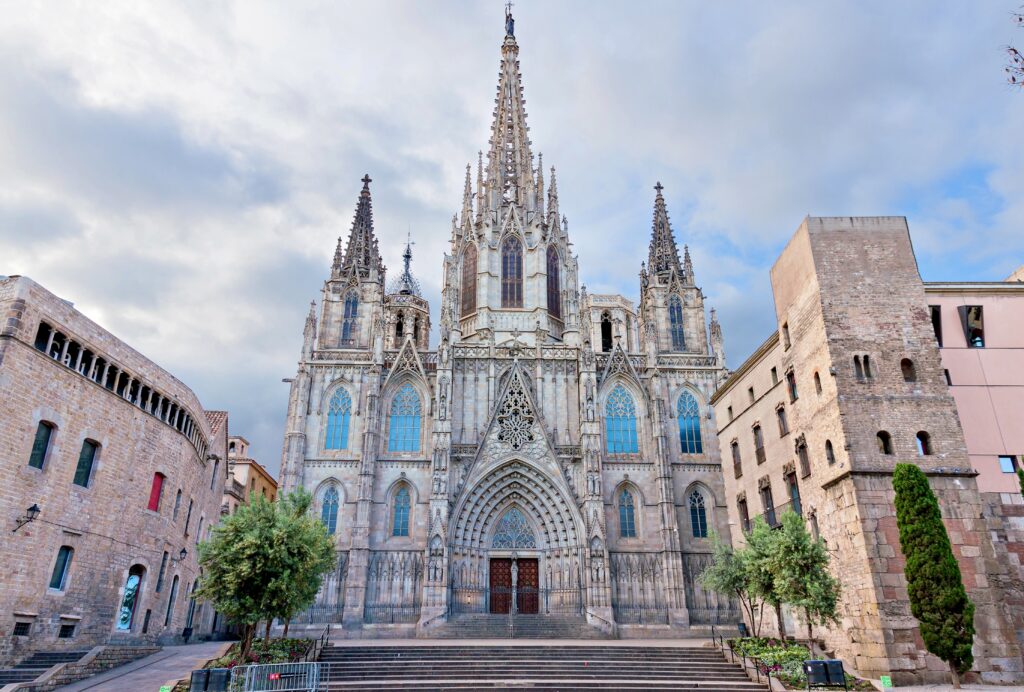
Inside, you should check out the baptistery, the chapels, the crypt, and the cloister.
The cloister is a real highlight. It’s a leafy peaceful haven filled with geese and pretty chapels. You should alsohead up to the rooftop for amazing views.
Then, stroll down La Rambla. Watch the street performances, check out the massive Botero cat sculpture, the Joan Miro mosaic, and peak into Carrer del Bisbe to see the Gothic bridge.
Also watch your pockets!
Be sure to stroll through Placa del Reial, just off La Rambla. It’s a hub of nightlife.
The square is full of palm trees and Neo-Classical porticos. The lampposts near the central fountain were Gaudi’s first known commission.
Depending on how much strolling you’ve done, if you have time before lunch, I recommend visiting Palau Güell.
It’s one of Gaudi’s earliest masterpieces. It’s a madcap combination of Gothic, Moorish, and Modernist art. You can see some of Gaudi’s earliest experimentation in the basement and on the rooftop.
For lunch, dive into the culinary delights of La Boqueria Market on your own or on a guided tour.
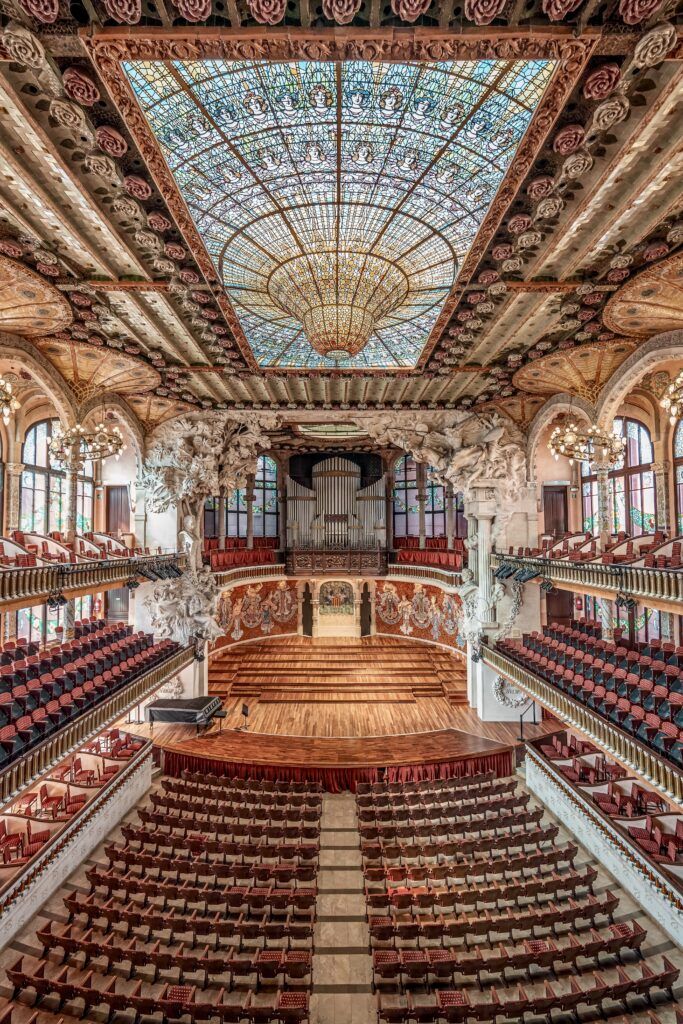
After lunch, head to the chic El Born district adjacent to the Gothic Quarter. Its cobbled streets and plazas are filled with stylish indie boutiques, bars, restaurants, and some top notch sites.
Palau de la Musica
First, tour Palau de la Música Catalana, Barcelona’s Modernist concert hall.
This is Barcelona’s most beautiful interior space, designed by LLuis Domenich I Montaner.
The palace is a visual feast, filled with playful and whimsical details both inside and outside. Its lavish decoration features shiny mosaics, colorful stained glass, a dazzling skylight, and intricate sculptures.
It’s truly breathtaking. The real highlight is the inverted stained glass dome in the auditorium.
>>> Click here to pre-book a ticket
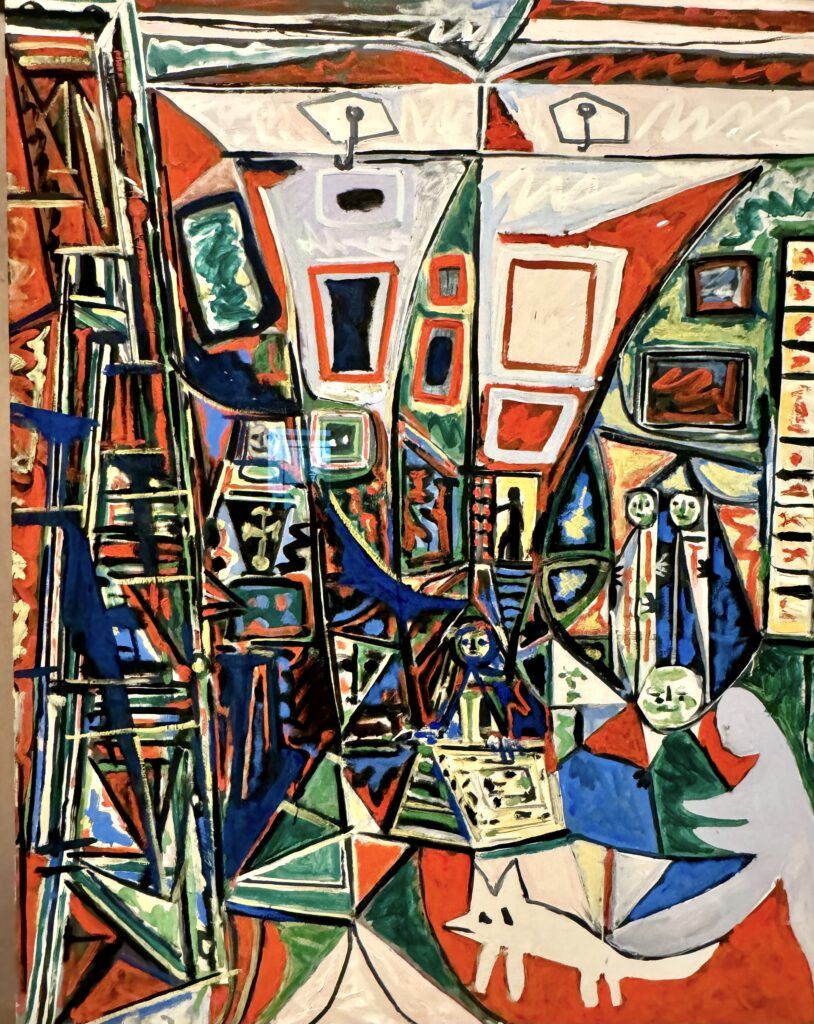
Picasso Museum
In the later afternoon, visit the Picasso Museum to admire a comprehensive collection of Picasso’s early works.
Though Picasso made his mark in Paris, he spent his formative years in Barcelona. There are over 300 paintings, presented more or less chronologically.
You can follow the evolution of Picasso’s art. The most interesting room, to me, holds his riffs on the famous Diego Velazquez masterpieces Las Meninas.
You should pre-book a timed entry ticket if you want to avoid endless lines, especially in high season.
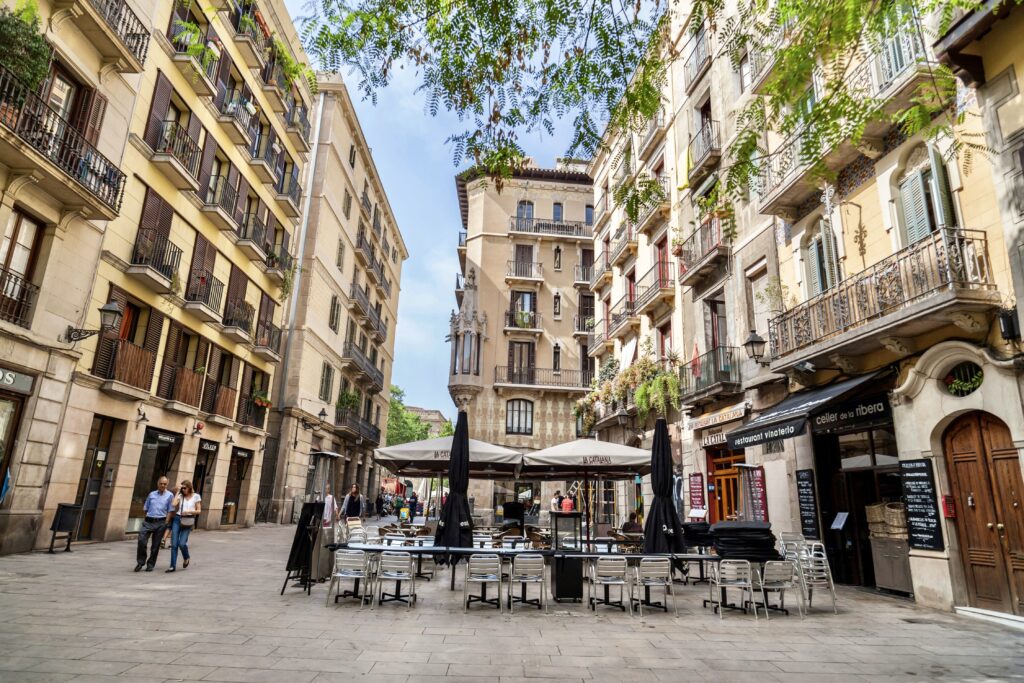
Evening
In the evening, explore the vibrant nightlife and dining scene in El Born, a district known for its lively bars and restaurants.
Have cocktails at Especiarium, where they serve up spicy concoctions served in witty vessels.
If you want something traditional, head to Quartre Gats.
This is bar where artists and modernists, including Picasso, gathered in the early 20th century. It’s where the artist first showed his art.
In the evening, there’s often piano music.
Some restaurants I recommend in El Born and El Raval are:
- El Xampanyet: bustling tapas bar famous for its traditional Catalan dishes and sparkling cava
- Dos Pebrots: creative takes on Mediterranean cuisine (Persian kebab was amazing!)
- El Chigre: heaps of seafood (try the octopus with chimchurri seaweed)
Alternatively, you could go to a flamenco show (before or after dinner) or go on a guided tapas tour to sample a bit of everything.
I always try to go on a food tour in every city I visit.
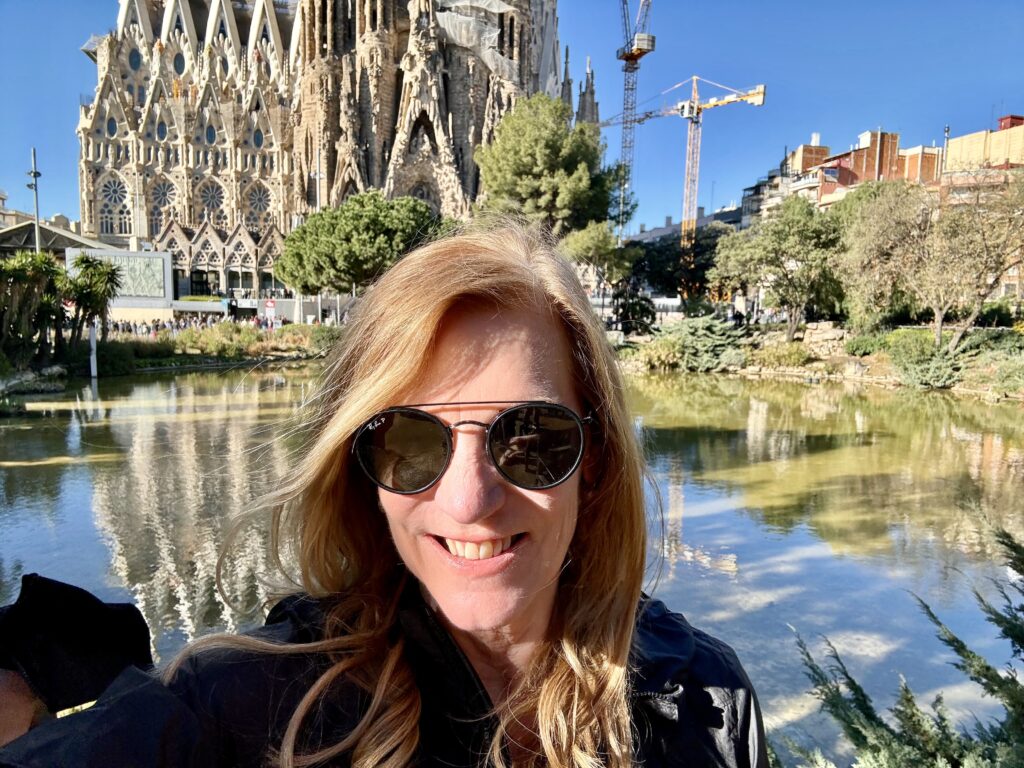
Day 2: Eixample & Montjuïc
On day 2, begin at Sagrada Família. The basilica opens at 9:00 am (Sundays at 10:30 am).
Centuries in the making, this dizzying Modernist temple continues to rise slowly to the heavens, with an expected completion date of 2026.
It was much more finished inside than when I last visited!
On the sandstone castle-style exterior, you’ll see 12 towers, four on each facade, represent the apostles.
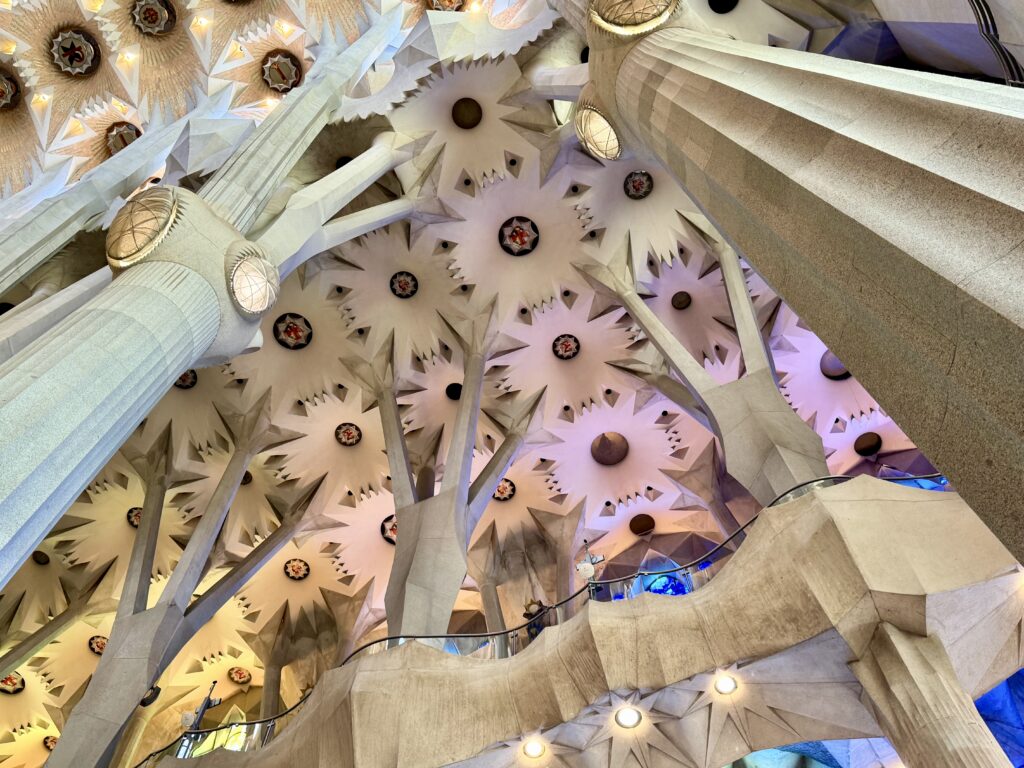
Five other towers symbolize the Virgin Mary and the evangelists. The central tower, still to be completed, represents Christ.
Inside, it is completely sublime and will move even a hardened atheist.
There is a soaring central nave held up by Doric columns with spherical capitals, which seem to sprout branches.
Each of these branches turns into a glorious forest canopy with stars at the top.
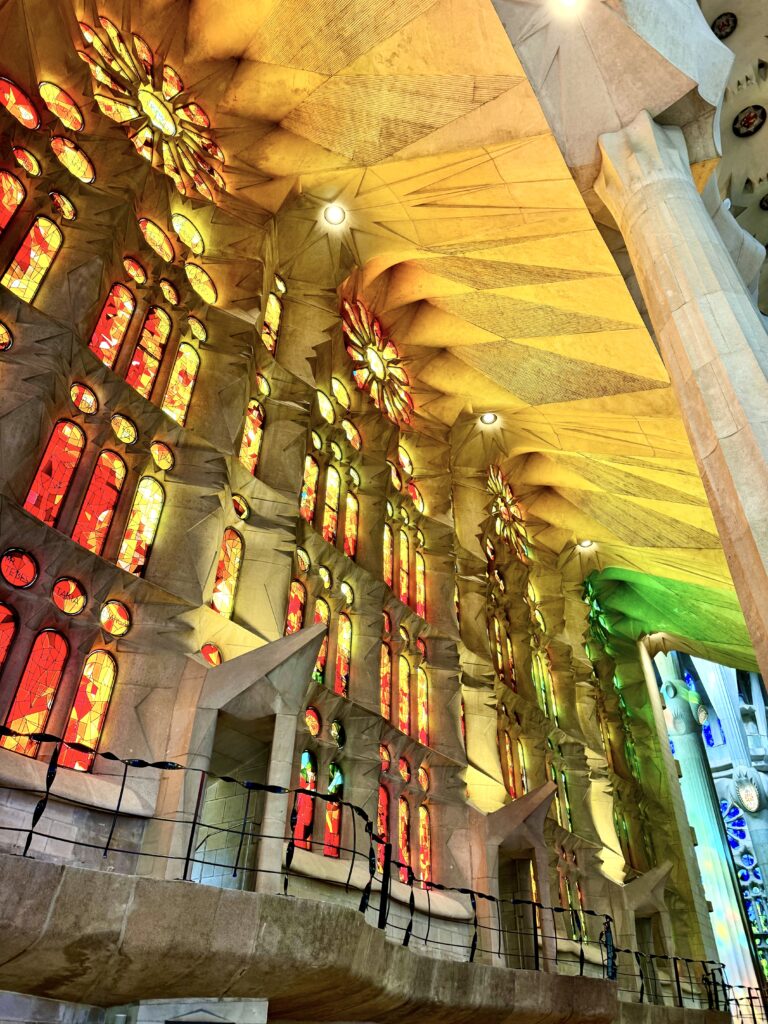
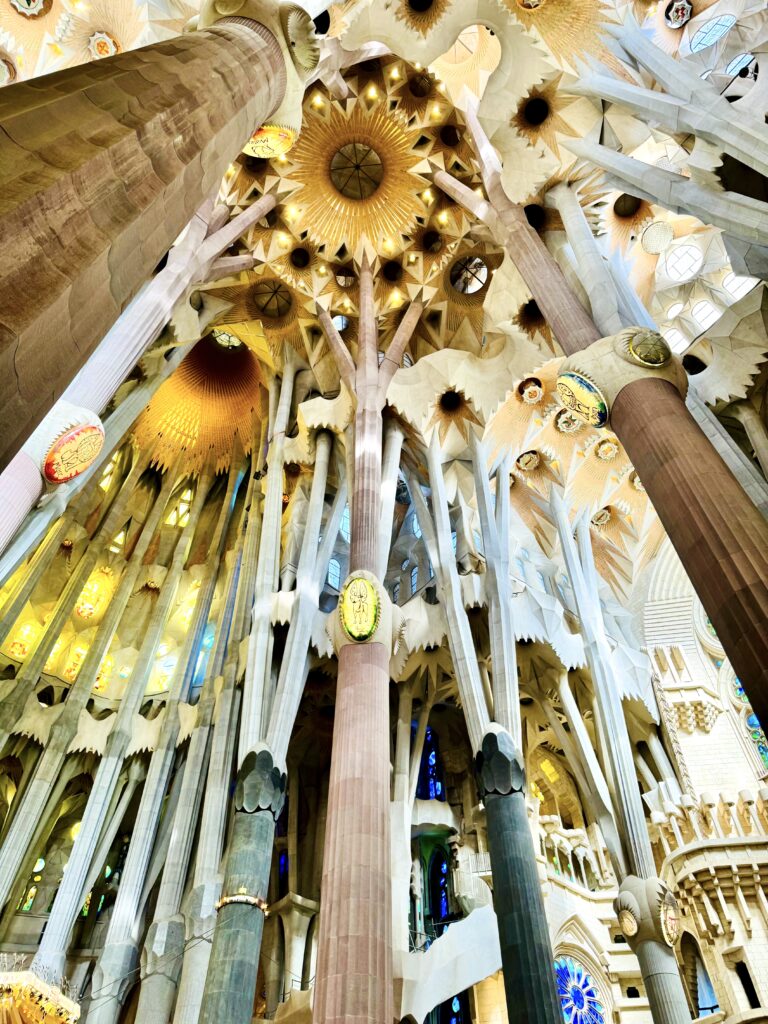
The stained glass windows on the sides are simply gorgeous when the sun shines through then.
And you’ll want to take an elevator up to one of the towers to check out the details more closely and grab a nice view.
You absolutely need to pre-book timed entry skip the line tickets for Sagrada Familia. I also advise booking a guided tour that includes a trip up one of the towers.
After Sagrada Familia, grab an early lunch in Eixample.
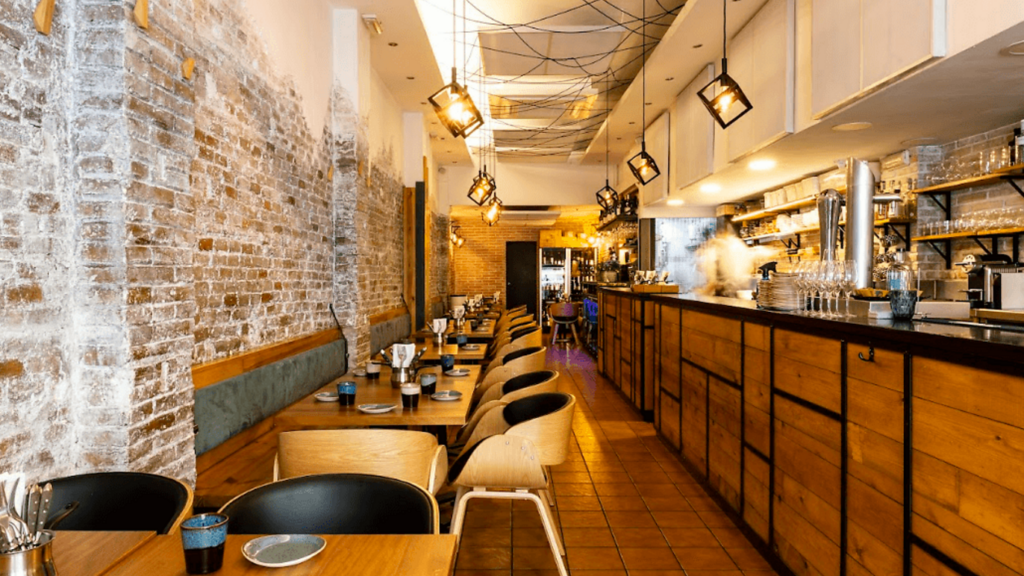
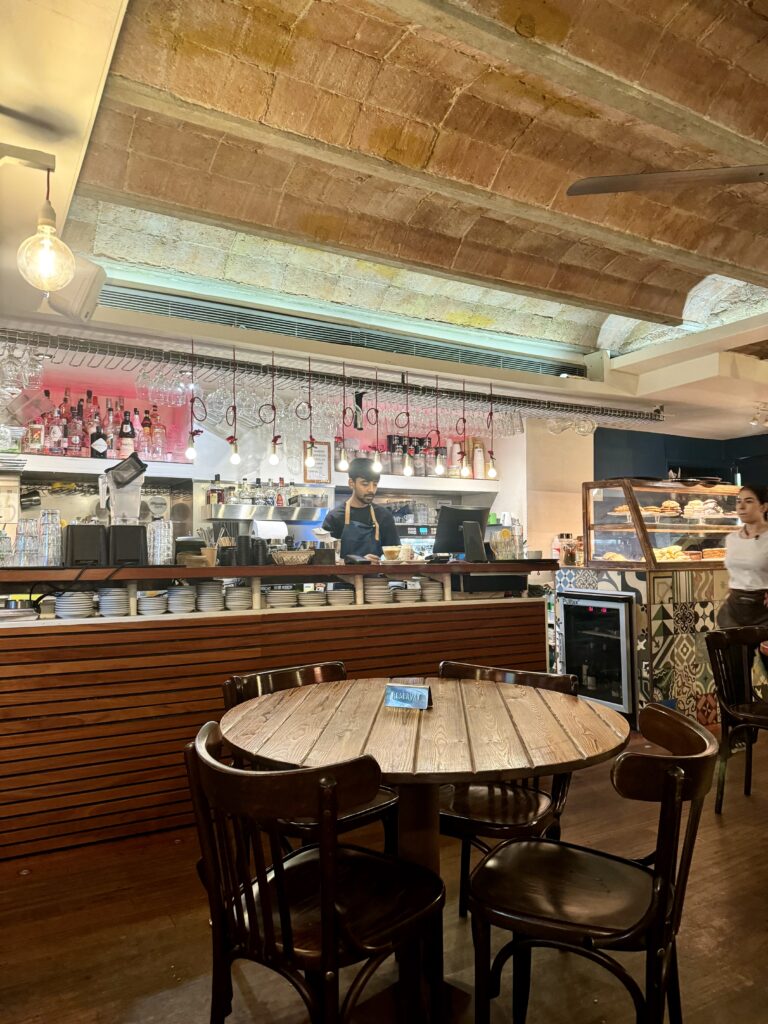
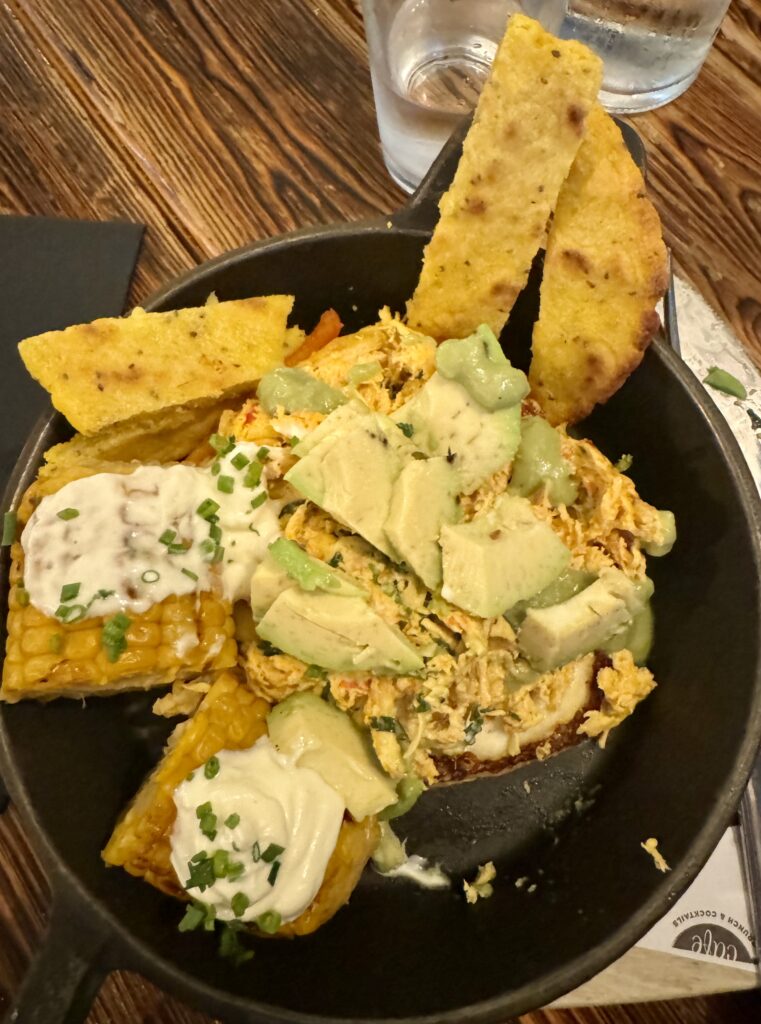
I really liked Cruix. It has a great tasting menu with Spanish fusion dishes.
Mont Bar is a cool gastropub that’s also a great option. Lip smacking Catalan wines are paired with fresh takes on Catalan cuisine.
Cafe Cosmos and Alsur Cafe are also amazing options for a casual lunch.
Alsur is very pretty under brick vaulted ceilings. (It’s also great for brunch.)
It’s probably a good idea to make a reservations in advance to secure a table.
After lunch, visit Casa Batlló or Casa Milà (La Pedrera) in the Eixample district to appreciate Antoni Gaudí’s architectural genius.
You won’t have time to do both unless you skip going up to Montjuic later. But both attractions also have evening sound and light shows on the rooftops.
Casa Batlló
After Sagrada Familia, Casa Batlló is Gaudi’s most famous work and the most beautiful facade in the city.
It’s like nothing you’ve ever seen before. The theme is dragon iconography, based on the legend of St. George and the Dragon.
The facade undulates and shimmers with a trecandis (broken tiles) coat. Shin bones decorate a melting cavern-like entrance. Balconies resemble the jaws of a dragon.
The building is topped with the strangest roof in all of Barcelona.
The vividly colored trencadis tiles symbolize the blood of its victims. Meanwhile, the rooftop spire embodies the sword of St. George as it pierces the dragon.
The interior is filled with beautiful tiles, curved wood, rippling ceilings, and stained glass — all in organic forms and curvy shapes.
You’ll end with a visit to the Magic Cube, a sound and light show that’s intended to get you inside the mind of Gaudi.
You’ll definitely need to pre-book a skip the line ticket and you may want to opt for a guided tour to understand Gaudi’s vision.
La Pedrera
La Pedrera, with its undulating facade, is considered by most critics to be more significant than Casa Batllo. Gaudi built it from scratch and directed every element of its construction.
The gray stone facade seems in constant motion, decorated with seaweed-like wrought iron balconies.
The motion-filled design continues in the interior with two separate internal courtyards. The sweeping staircases are decorated with colorful murals with sea and floral motifs.
You can visit the two first floor patios, the attic, a top floor apartment, and the what looks like a Star Wars themed roof.
As with Casa Batllo, you’ll want to book a timed entry ticket. I went to the sound and light night experience on my last visit, and really enjoyed it.
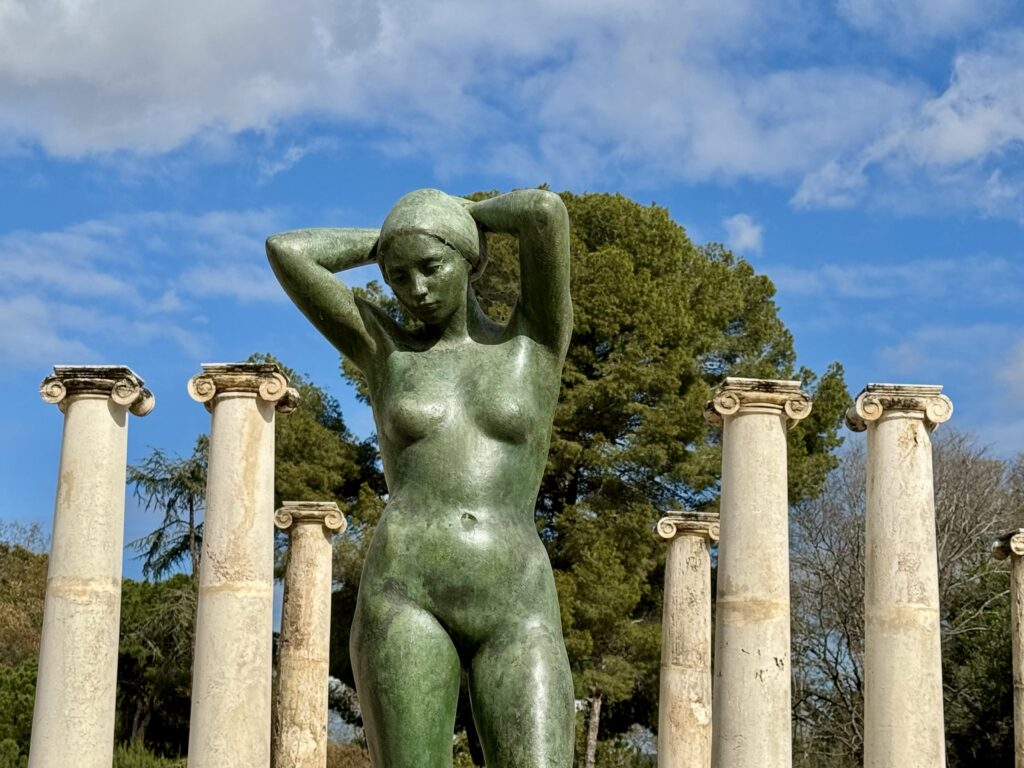
If you can’t decide which one to visit, I’d opt for La Pedrera. The interior and roof is more interesting to my mind
The best thing about Casa Batlló is the facade, which you can admire perfectly well on a stroll.
Montjuïc
Then, head to Montjuïc via cable car or taxi for scenic city views.
If you’re a history buff, visit Montjuïc Castle for a mix of history and panoramic vistas.
Otherwise, stroll through the many gardens and visit either the Miro Foundation or the National Museum of Catalan Art (“MNAC”). In high season, both museums are open until 8:00 pm.
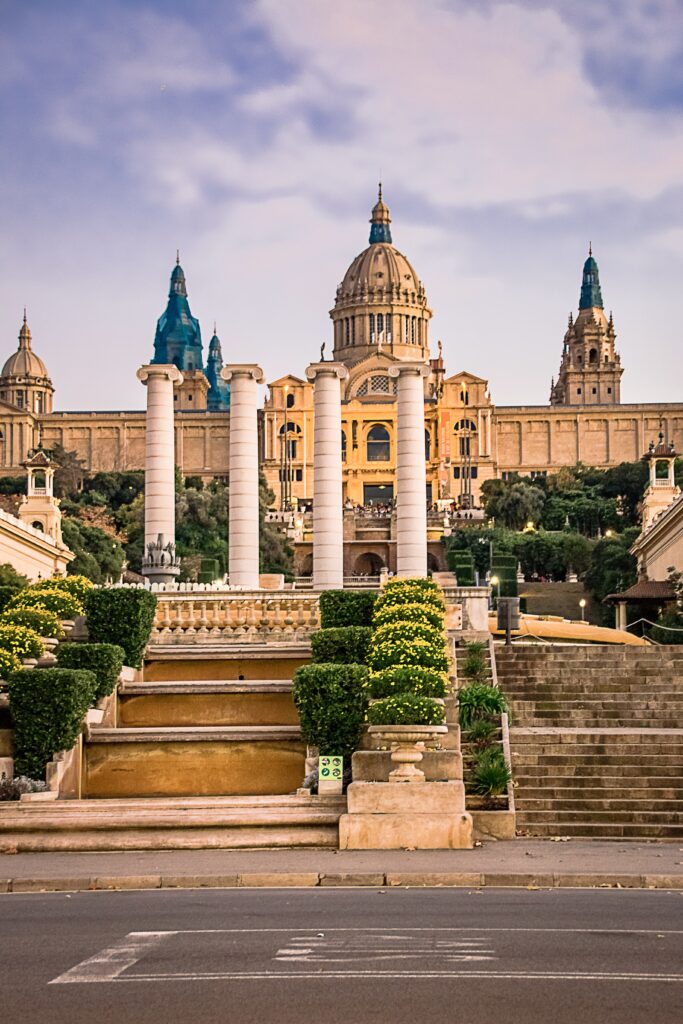
The Miro Foundation is a single artist museum dedicated to Catalan Surrealistic artists Joan Miro.
It’s in a striking modern building that was purpose built for the collection. You can see the whole range of Miro’s life’s work and see his whimsical sculptures in the rooftop gallery.
The MNAC offers you an overview of centuries of Catalan art. It’s housed in a Neo-Baroque Place with commanding views.
Inside, you can choose from Romanesque art, Renaissance and Baroque art, and two sections of Modern art. The highlight, in my opinion, are the Romanesque murals, the world’s best collection.
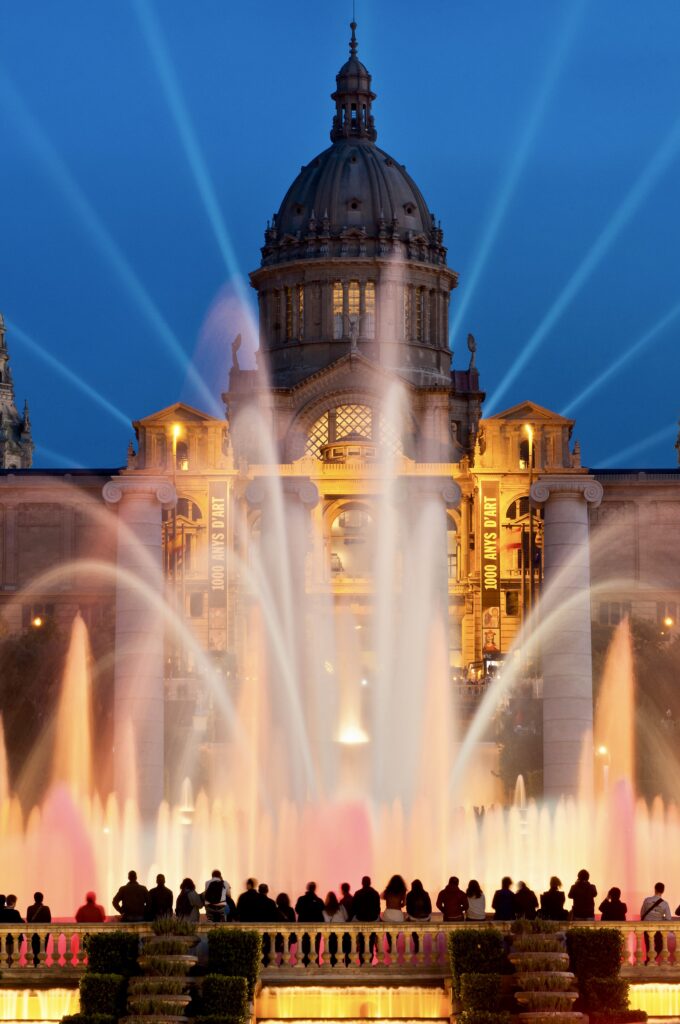
For dinner, consider a restaurant in Montjuïc like Petit Pau. Or return to the city center for more options.
If you stay in Monjuïc, conclude your day watching the Magic Fountain show.
It’s a spectacular display of water, light, and music. In summer, the shows are at 9:30 pm and 10:00 pm.
If you’re staying in Eixample and want to return, check out Estimar. If money is no object (wouldn’t that be nice?), this is the place to sample some luxury items like barnacles baby squid.
Another good option is Roberta, with excellent Japanese food. The sushi and grills are beyond delicious.
If you’re looking for a long Michelin dining experience, reserve at Cinq Sentits. It’s a traditional Catalan place with the best of local produce.
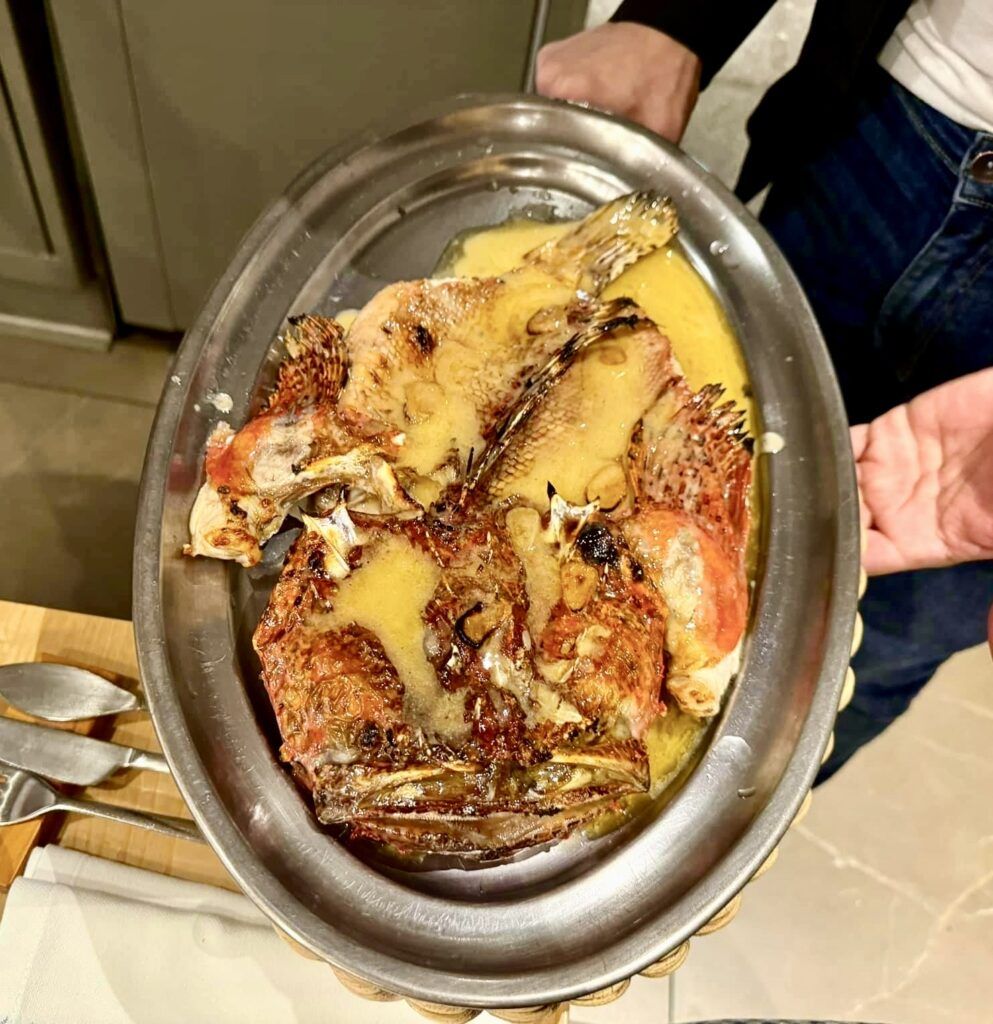
Tips For 2 Days In Barcelona
For specific information, you should check out my essential tips for visiting Barcelona. But here are a few basics you’ll need to know.
Getting To Barcelona
The main airport serving Barcelona is called Barcelona-El Prat Airport. It’s located about 7.5 miles southwest of the city center.
There are several convenient ways to travel from the airport to the city center. You can catch a RENFE train that departs about every 30 minutes.
Alternatively, taxis are readily available outside the terminals and can get you to the city center in roughly 20-30 minutes.
For a more comfortable and personalized option, consider booking a private transfer directly to your hotel.
If you’re arriving by train instead of flying, the metro and taxis are also available to help you reach the city center.
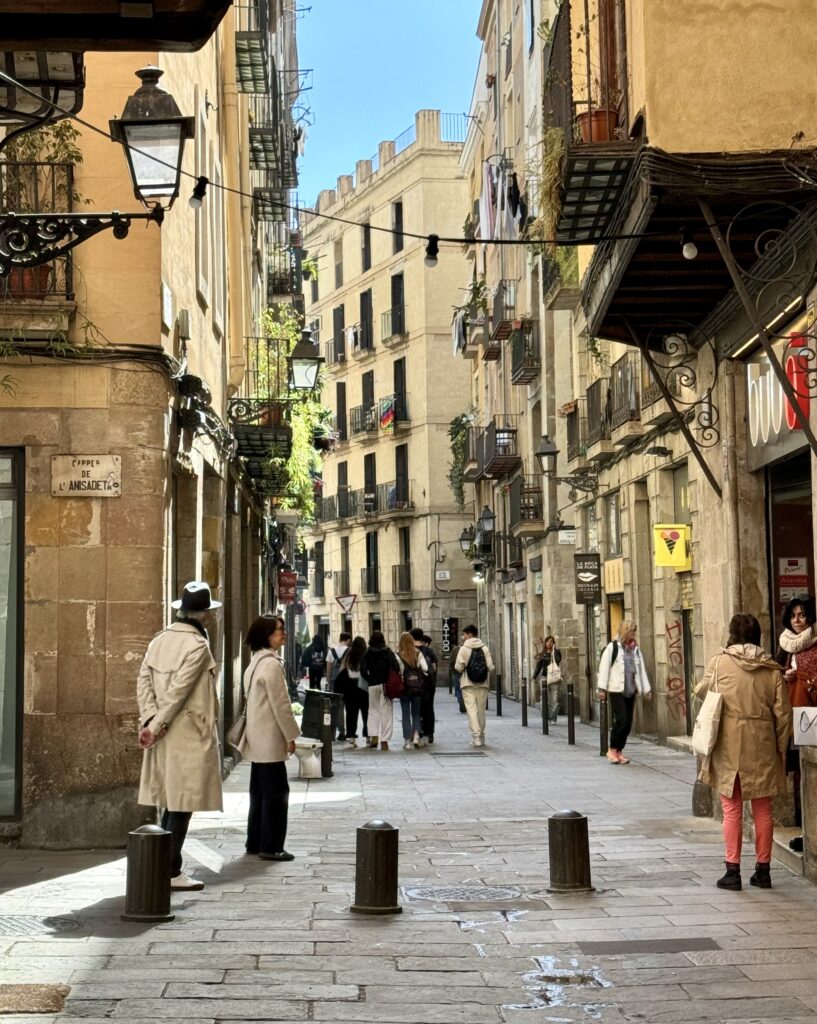
Getting Around Barcelona
Barcelona is not all that big, so it’s easy to get around on foot. Some steep neighborhoods, like Montjuic, have escalators to take the edge off.
The public transport network, run by TMB, includes the metro, bus, and tram.
The metro is easiest to use. But I thought the bus map was incredibly daunting, and didn’t use buses myself.
You can also get around via:
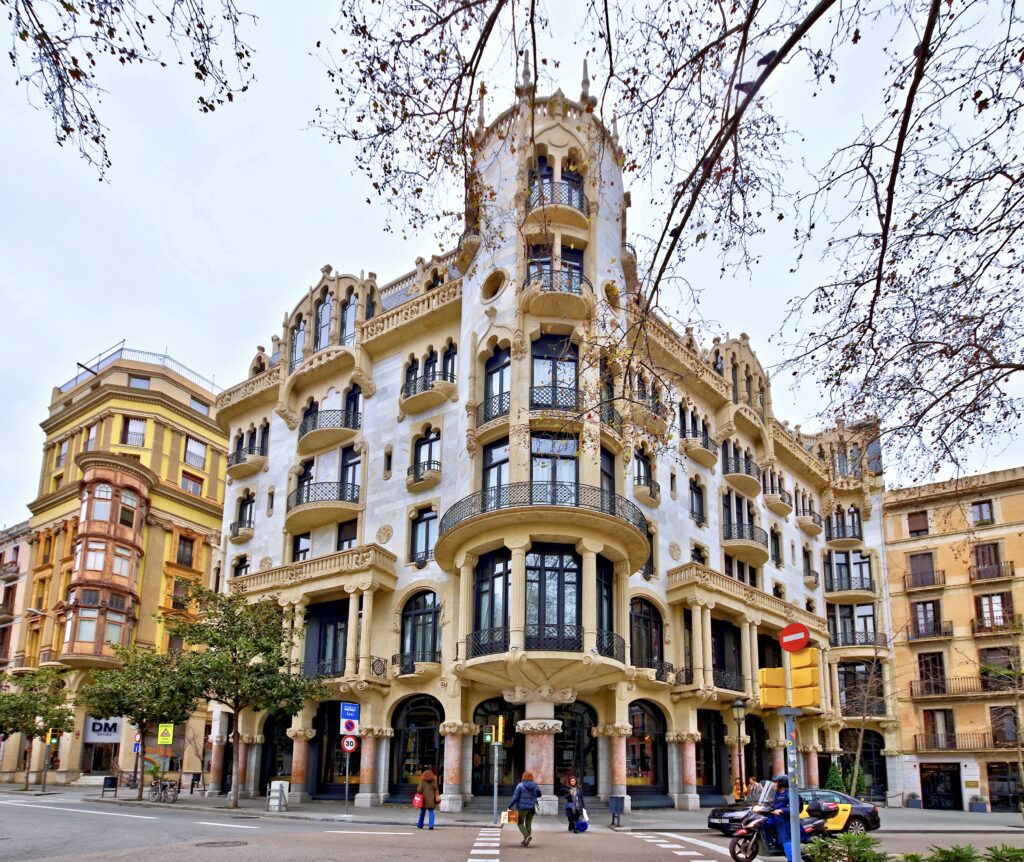
Where To Stay In Barcelona
There are a plethora of hotels in Barcelona these days. Still, you should reserve in advance.
If you want to stay in the Gothic Quarter for some old world charm, Hotel Colon is the classic choice and the Mercer is an exquisite newcomer. And Hotel Habana House, in El Born, is lovely modern boutique hotel.
I like staying in Eixample. It’s quieter and there’s so much to do.
Casa Fuster is an amazing Modernist building converted into a luxury hotel. The Claris is one of the city’s best hotels, known for its modern design and art collection.
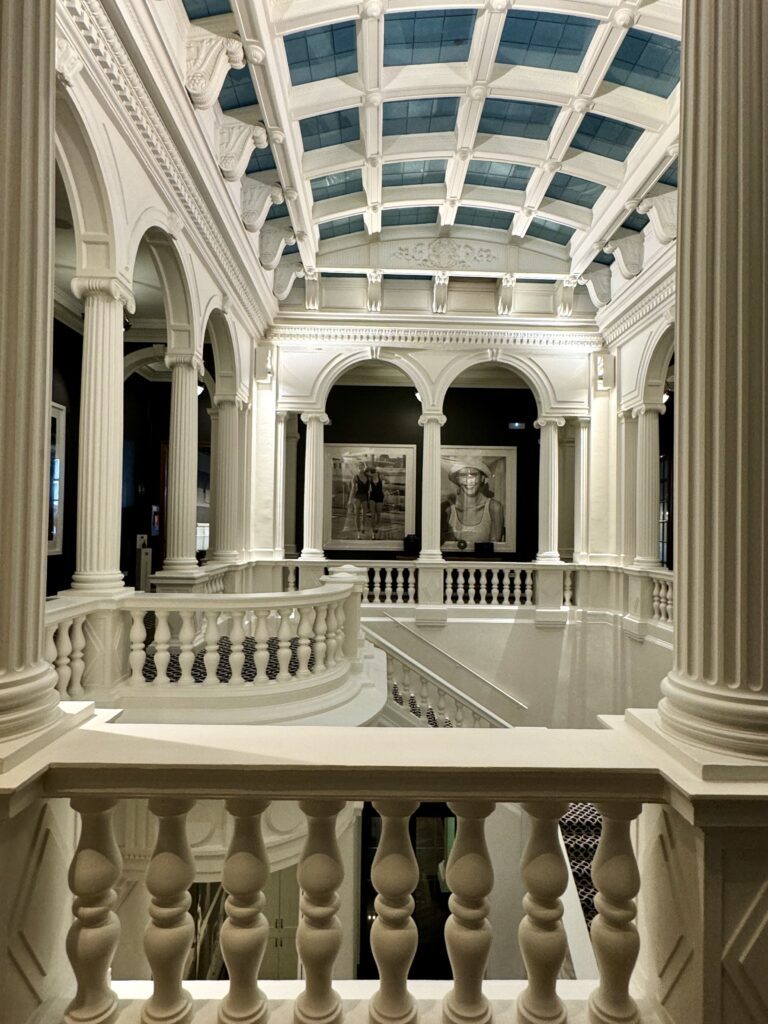
If you want something more moderately priced, I recently stayed in Hotel Granvía. It has a gorgeous lobby and library, and is very central, close to Passeig de Gràcia.
I hope you’ve enjoyed my 2 days in Barcelona itinerary. You may find these other Barcelona travel guides useful:
- 1 day in Barcelona itinerary
- 3 days in Barcelona itinerary
- what to do in the Gothic Quarter
- best museums in Barcelona
- hidden gems in Barcelona
- landmarks in Barcelona
- guide to architecture in Eixample
Pin it for later.

